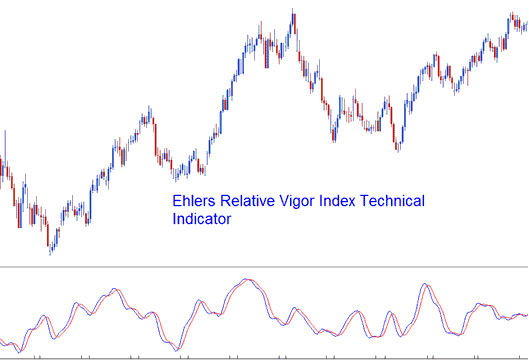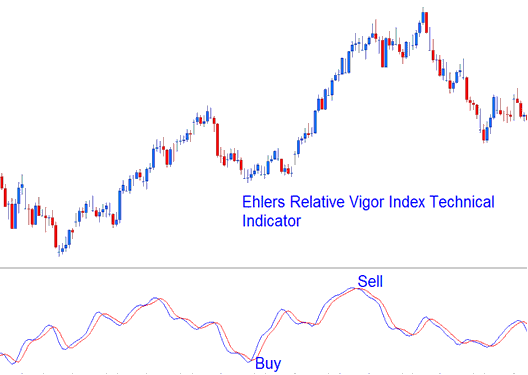RVI Technical Analysis & Relative Vigor Index Signals
Created and Developed by John Ehler
The RVI combines the older concepts of technical analysis with modernized digital trading signal processing theories & filters to create a practical & useful technical indicator.
The basic principle behind it's simple -
- Prices tend to close higher than where they open in up-trending markets and
- Prices close lower than where they open in down-trending markets.
The force (vigor) of the move will hence established by where the prices end up at the close of the candlestick. The RVI plots 2 lines the RVI Line & the signal Line.
The RVI index is essentially based on measuring of the average difference between the closing & opening price, & this value then is averaged to the mean average daily range & then plotted.

This makes the index a responsive oscillator technical indicator that has quick turning points which are in phase with the market cycles of prices.
Technical Analysis and How to Generate Trading Signals
The RVI is an oscillator indicator. The basic technique of interpreting the index is to use the cross-overs of the RVI and the SignalLine. The Signals are derived & generated when there is a cross over of the 2 lines.
Bullish Signals - a buy signal happens when the RVI crosses above the Signal-Line.
Bearish Signals - a sell trade signal happens when the RVI crosses below the Signal-Line.

Buy & sell signals derived/generated using the crossover trading strategy
Learn More Topics and Tutorials:
- How to Find and Get MT4 USD DKK Chart
- UsTec 100 MetaTrader 4 US TEC 100 Trade Software Platform
- Forex Choppiness Index Expert Advisor Setup
- Alligator Technical Analysis in Trade Forex
- How to Open Demo Account on MetaTrader 4 Trade Platform
- How Do I Place Fractals Trading Indicator in XAU USD Chart on MT4 Software/Platform?
- How to Analyze/Interpret Pips in NZDJPY How to Count Pips in NZDJPY
- List of FTSE Strategy
- What is Index in Trade?
- How to Use MetaTrader 5 Kase Peak Oscillator Technical Indicator


